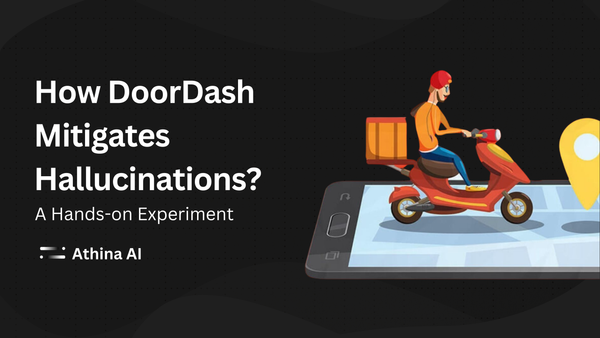How to Test and Validate LLMs with Real-World Scenarios

Large Language Models (LLMs) have revolutionized natural language processing, but their true value lies in their ability to perform in real-world situations.
Testing and validating LLMs with realistic scenarios is crucial for ensuring their reliability, safety, and effectiveness.
This article will guide you through the process of rigorously evaluating LLMs using practical, real-world test cases.
Introduction
As LLMs become increasingly integrated into various applications, from chatbots to content generation systems, it's essential to verify their performance beyond controlled environments.
Real-world testing helps identify potential biases, limitations, and unexpected behaviors that may not be apparent in standard benchmarks.
1. Defining Real-World Scenarios
The first step in testing LLMs with real-world scenarios is to identify and define relevant use cases:
- Brainstorm diverse situations: Consider various industries, user demographics, and potential edge cases.
- Collect actual user queries: Analyze logs from existing systems or conduct user surveys to gather authentic input.
- Include multilingual and cultural contexts: Ensure your scenarios cover different languages and cultural nuances.
2. Creating a Comprehensive Test Suite
Develop a robust test suite that covers a wide range of real-world scenarios:
- Design task-specific tests: Create tests for different tasks like question-answering, summarization, or code generation.
- Incorporate domain-specific knowledge: Include scenarios that require specialized knowledge in fields like medicine, law, or finance.
- Simulate conversational flows: For chatbot applications, design multi-turn conversations that mimic real user interactions.
3. Implementing Evaluation Metrics
To quantify the LLM's performance, establish appropriate evaluation metrics:
- Use both automated and human evaluation: Combine metrics like BLEU or ROUGE with human judgments for a comprehensive assessment.
- Assess factual accuracy: Verify the correctness of generated information, especially for knowledge-intensive tasks.
- Measure coherence and relevance: Evaluate how well the model's responses align with the given context and user intent.
4. Conducting Adversarial Testing
Challenge your LLM with adversarial inputs to uncover potential vulnerabilities:
- Test for bias and fairness: Present scenarios that could reveal gender, racial, or other biases.
- Probe for hallucinations: Intentionally provide ambiguous or misleading prompts to check if the model generates false information.
- Evaluate robustness to noise: Introduce typos, grammatical errors, or colloquialisms to test the model's resilience.
5. Iterative Testing and Fine-tuning
Use the insights gained from testing to improve your LLM:
- Analyze error patterns: Identify common mistakes or weaknesses in the model's performance.
- Fine-tune on specific domains: If necessary, adapt the model to perform better in particular areas or tasks.
- Implement safety measures: Based on the test results, develop filters or guardrails to prevent harmful outputs.
Best Practices and Tips
- Version control your test suites: Keep track of different versions of your test scenarios to ensure reproducibility.
- Use a diverse set of prompts: Vary the phrasing and complexity of inputs to thoroughly assess the model's capabilities.
- Regularly update your test cases: As language use evolves and new scenarios emerge, keep your test suite current.
- Leverage tools and frameworks: Utilize libraries like
transformersor platforms like Hugging Face's Model Evaluation to streamline your testing process.
Conclusion
Testing and validating LLMs with real-world scenarios is an ongoing process that requires creativity, rigor, and attention to detail.
By following these steps and best practices, you can ensure that your LLM is not just powerful in theory, but also reliable and effective in practical applications.
Remember, the goal is not perfection, but continuous improvement and a deep understanding of your model's strengths and limitations in real-world contexts.



